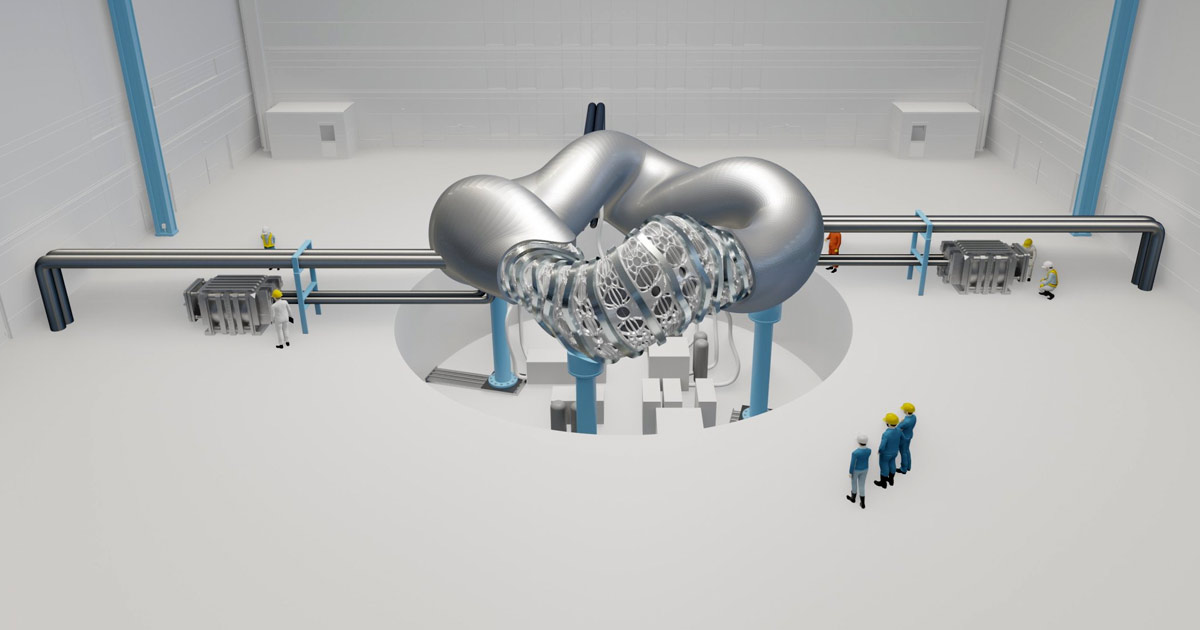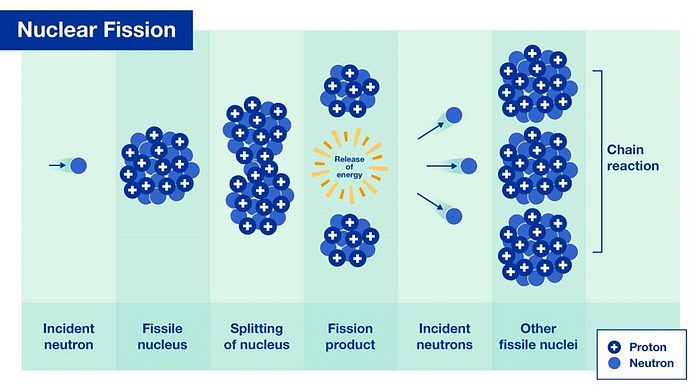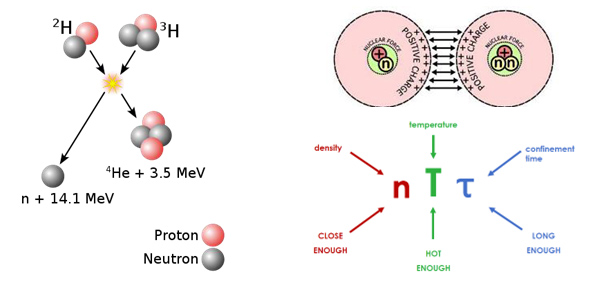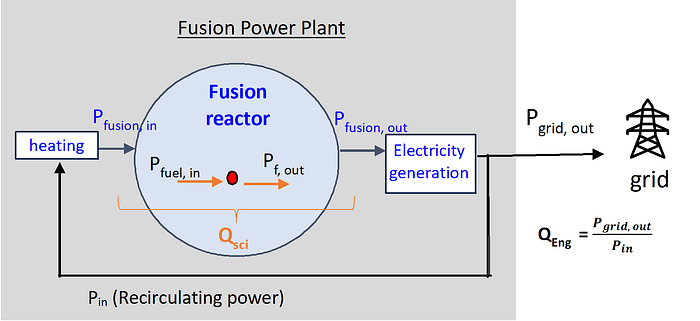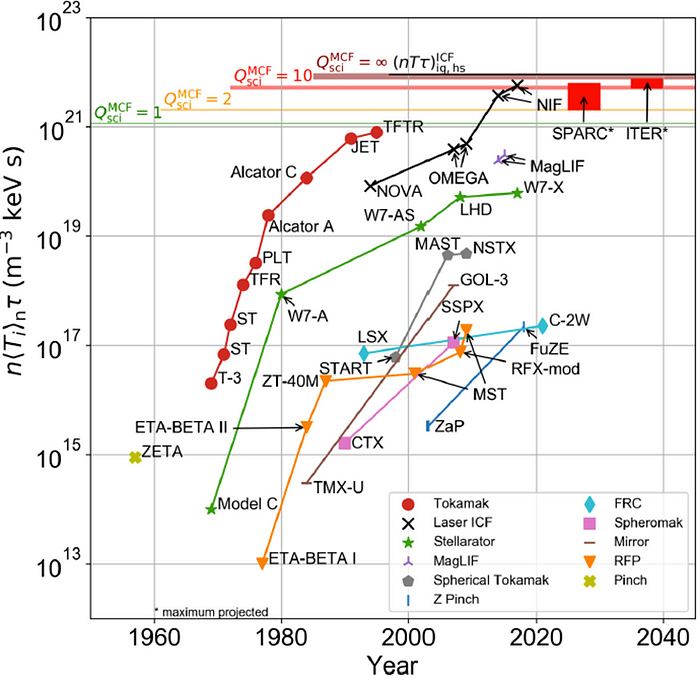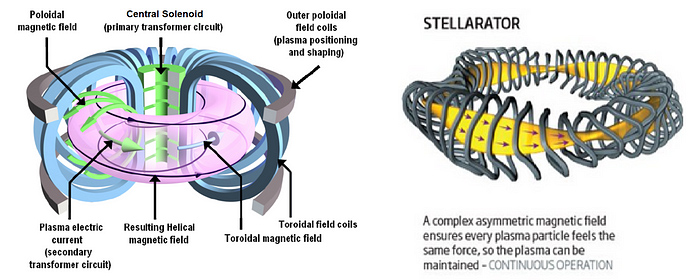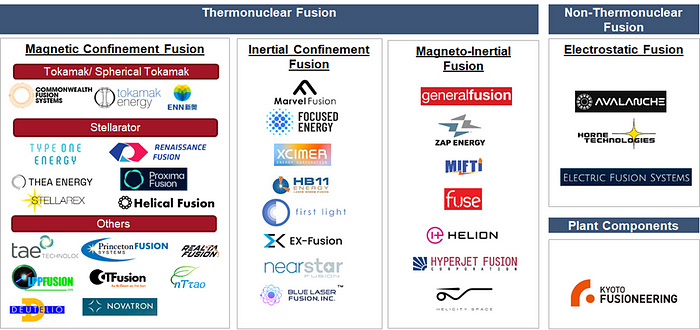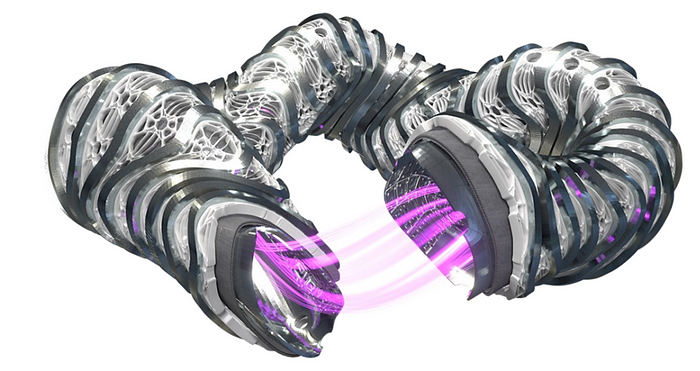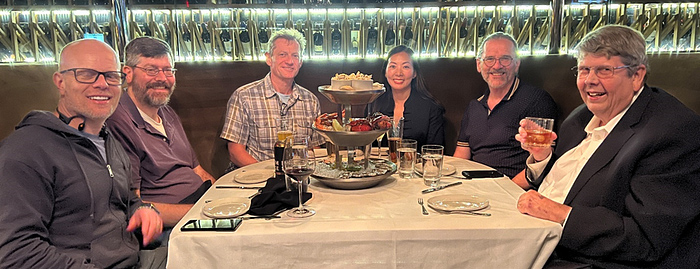Introduction
Overview
Fusion power is the key to the energy transformation that humanity needs to drive decarbonization, clean, and baseload energy production that is inherently fail-safe, with no risk of long-lived radioactive waste, while also delivering on ever-growing energy-consumption demands at the global scale. Fusion is hard and requires exceptional conditions for sustained reaction (which is part of what makes it so safe), which has long served as a deterrent for technical maturation and industrial viability. Type One Energy, led by world-class scientists and energy entrepreneurs, brings innovation to a Stellarator-based fusion approach that can operate continuously and serve as a baseload power source for a stable energy grid. They have developed ground-breaking designs to improve optimization, enable tractable manufacturing, and compact sizing through new high-temperature superconductor materials. TDK Ventures is proud to invest in and support Type One Energy to bring their nuclear fusion solution to the forefront of the global energy transition.
Here we share the key KPIs to consider when evaluating fusion technologies, startup market maps, and why we ultimately believe Type One Energy is the King of the Hill for the fusion power plant of the future.
Introduction: Energy Transition and the Potential of Nuclear Power
The current reality of our world is monumental fossil-fuel dependence. This, coupled with unprecedented levels of energy demand has resulted in the over 136,700 TWh (that’s 10¹²) of energy consumed via fossil fuels annually [1]. Chief repercussion among the many consequences of this dependence is the now very looming threat of climate catastrophe, which will soon be irreversible if global temperature rise is not abated and held to within 1.5 °C of pre-industrial levels. To do so, the nearly 40 gigatons of CO2 emissions generated each year must be steadily reduced and eventually mitigated entirely [2]. A fundamental shift in how power is generated globally is the only way forward. Humanity needs an energy transformation — the right energy transformation.
Alternative energy-generation techniques, such as wind, solar, geothermal, and hydroelectric approaches have all made excellent strides, and indeed in just the United States electricity generated by renewable methods doubled from 10 to 20% of total between 2010 and 2020 [3-4]. These numbers are incredibly encouraging and give significant credence in the journey to net-zero emission energy generation. However, while these standard renewable approaches should be championed, wind and solar are intermittent and require a large amount of land to deploy, while geothermal and hydroelectric are not available in every geography.
By far the most viable candidates for continuous clean energy generation to replace coal-fired power plants are nuclear-driven technologies, i.e. nuclear fission or nuclear fusion. Nuclear fission has been a proven effective method ever since it was first demonstrated almost 80 years ago underneath the University of Chicago football Stadium by Nobel Laureate Enrico Fermi [5]. Heavier atomic elements, in most cases Uranium-235, are exposed to and bombarded by neutrons. This causes the Uranium to split resulting in two slightly less-heavy elements (like Barium and Krypton). This in turn causes energy to be released and more neutrons to be ejected and bombard other nearby Uranium-235, at which point the process cascades into a chain reaction. The released energy (heat) is utilized in the same way coal is burned in a traditional power plant, being subsequently used to generate electricity usually via the creation of steam to drive a turbine [6]. While already having reached viable commercial maturity, fission carries inherent and nontrivial safety concerns. An unhampered chain reaction can quickly lead to meltdown with disastrous consequences, and, even when properly managed, the end reaction does generate radioactive waste whose half-life can last hundreds of thousands of years.
Figure 1. Breakdown of a nuclear fission reaction [6]. Incident neutron bombards a fissile heavy element, splitting it and release energy and more nuclei setting off a chain reaction.
Especially given modernization efforts and meteoric gains in safety (thanks to advents in material science like ceramic coatings), fission will continue to be a critical piece to better, greener energy transformation. However, in extending our vision to an even brighter future with no such concerns — carbon emissions or safety — nuclear fusion is humanity’s silver bullet. Instead of breaking down atoms leading to a chain reaction, fusion is the combining of atoms (usually isotopes of Hydrogen) into heavier elements which also results in energy release / heat generation [7]. Like fission, fusion can be designed to be a continuous energy source that can serve as a permanent backbone to the power grid. It is extremely energy dense, with 1 kg of fusion fuel producing the same amount of energy as 1,000,000 kg of coal, and it is inherently fail-safe with no long-term radioactive waste.
KPI #1 in Evaluating Fusion Concepts — The Lawson Triple Product (nTτ)
As a concept, if fusion is a silver bullet to answer humanity’s energy transformation needs, then why haven’t we done so already? The appeal seems so obvious, what’s the hold up? Simply put, nuclear fusion is hard for the very same reason the process is inherently safe. Atoms in the process must have enough energy to overcome electrostatic repulsive forces between the two positive charges of their nuclei to fuse. The key figure of merit to evaluate fusion is the so-called “Lawson Triple Product.” Essentially, this means in order to generate energy by fusion more than the rate of energy loss to the environment, the nuclei must be very close together (as represented by n — the plasma density), kept at a high enough temperature (as represented by T — temperature), and for long enough time to sustain fusion (as represented by τ — the confinement time). The triple product required to achieve fusion “ignition” (the state where the rate of energy production is higher than the rate of loss) depends on the fuel type and occurs within a plasma state. A deuterium and tritium (D-T) system has the lowest Lawson Triple product requirement, where fusion can achieve a viable threshold for ignition when the density of the fuel atoms, n, multiplied by the fuel temperature, T, multiplied by the confinement time, τ, is greater than 5×10²¹ (nTτ > 5×10²¹ keV-s/m³) [8-9]. For context, the temperature alone in this scenario must be higher than 100-million degrees Celsius.
Figure 2. (Left) Conceptual illustration of a fusion reaction with Deuterium (²H) and Tritium (³H) forming an Alpha particle (⁴He) and free neutron along with energy released as heat (Right). To initiate fusion, repelling electrostatic charge must be overcome via conditions meeting the minimum Lawson Triple Product threshold.
KPI #2 in Evaluating Fusion Concepts — Energy Gain (Q)
Suffice it to say, there is a massive upfront energy investment to be able to initiate and sustain a fusion reaction in the first place. This has been the long-standing deterrent in fusion reactor development, as the process is only pragmatically viable if the energy output exceeds the very high necessary energy input.
Thus, the second important KPI in evaluating various fusion concepts is the energy gain (“Q”), where
It is critical to note that the frame of reference for measuring the Q value is quite important as can be illustrated in Figure 3.
Figure 3. Illustration of the energy gain calculation, which depends on the frame of reference.
The scientific energy gain (Qsci) is the ratio of the power output released by the fusion reaction over the applied heating power input. When evaluating the Qsci, the boundary is drawn from heating power that goes into the fusion reactor and what comes out of the reactor. This is a meaningful KPI to measure. When Qsci > 1, the fuel has achieved the ignition condition, meaning that the energy release from the plasma is higher than the energy that goes into the fusion reactor.
On the other hand, Qsci >1 does not mean that such fusion concept can become a practical power plant. There is a large amount of energy required to generate the heat source and to confine the plasma. The meaningful KPI to determine whether a fusion power plant is practical or not is Qeng, which is the ratio of the electrical power delivered by the fusion power plant to the grid over the power drawn from the grid to supply the fusion system. A practical fusion power plant is achieved when Qeng is at least 3 [10].
For example, the National Ignition Facility (NIF) at the Lawrence Livermore National Laboratory has conducted the inertial confinement fusion (laser) experiment on December 5, 2022 and achieved the “scientific breakeven (ignition)” when the 3.15 MJ of energy was produced from bombarding D-T fuel pellet exceeded the 2.05MJ of energy input from 192 powerful infrared lasers that went into the fusion reactor. In this case, the Qsci can be calculated as Qsci = 3.15MJ/2.05MJ = 1.5.
While this result is a significant breakthrough in the fusion science, the approach is still quite far away from becoming a viable commercial fusion power plant. This is because the efficiency of the laser heating is extremely low. In fact, 322MJ of electricity was required to generate 2.05MJ of laser in the NIF experiment [11], which resulted in the Qeng being only ~0.01.
We will discuss various approaches for fusion in the next section. It is important to recognize that the Qsci that translates into a practical fusion power plant does differ when we compare different fusion approaches. In the Inertial Confinement Fusion (laser-based) approach, Qsci must be > 100 to have a practical power plant. On the other hand, for the Magnetic Confinement Fusion, Qsci of >15 would suffice to have a practical power plant.
Apart from the two KPIs mentioned above, one should also consider the levelized cost of electricity (LCOE) produced by the proposed fusion approach. Such analysis should be validated by a reputable third-party engineering company. To ensure the economic viability, the LCOE for fusion should be competitive to the cost of energy generation by wind and solar plus a long-duration energy storage system.
Various Fusion Approaches and Startup Market Map
According to the survey by the Fusion Industry Association, over $6 Bn USD of public and private funding has been invested in the development of commercial fusion systems. Today there are more than 40 private fusion companies around the world pursuing different approaches [12].
There are several fusion approaches, which can be categorized into thermonuclear fusion and non-thermonuclear fusion. The non-thermonuclear fusion approaches are often disputed in the fusion community, while the thermonuclear fusion approaches are more proven and follow the Lawson Criterion. Within the thermonuclear fusion category, there are three main fusion approaches.
Figure 4. Fusion reactor output in terms of triple product since the 1960s [10].
1. Magnetic Confinement Fusion (MCF)
In the magnetic confinement fusion approach, high-field magnetic coils are arranged around the toroidal (circular or donut-like) reactor. Gaseous fusion fuel (D and T isotopes of hydrogen) is then injected into the cavity and heated to form a plasma. As the fuel tries to expand due to heating, the magnetic field produced by the coils maintain confinement within the inner cavity of the tube, wherein heating and increasing compression escalates until Lawson Triple Product criteria are met and fusion initiates. This class of fusion devices is characterized by long confinement time and low plasma density.
The current status quo for MCF is the Tokamak design initially conceptualized by Soviet scientists in the 1950’s, which as of 2016 was the leading candidate for a practical fusion reactor plant [13], with a current maximum record of Qsci = 0.67 set decades prior [14]. As shown in Figure 4, Tokamak performance is currently among the top four fusion concepts in terms of the triple product getting close to the scientific net gain. In the Tokamak approach the magnetic field is generated by a central solenoid (transformer circuit), outer poloidal field coils, and toroidal field coils. State-of-the-art designs introduce extremely high electrical current to the plasma via the transformer circuit. By relying on the injection of high current, the Tokamak configuration is also technically restricted to pulsed operation and is often plagued by the current instability problem. This happens when the transformer circuit is bringing the temperature up to the necessary levels and the current itself disrupts the toroidal magnetic field enough to destabilize confinement. Ultimately, this interrupts the necessary particle density and time duration to maintain fusion.
Alternatively, a Stellarator is another MCF concept originally conceived of in the early 1950’s by Lyman Spitzer of the Princeton Plasma Physics Laboratory (PPPL). A Stellarator fusion device seeks to improve plasma confinement based on magnetic field manipulation through geometry alone, instead of using secondary fields like in the Tokamak. This results in an inherently steady-state fusion device.
A modern Stellarator design conceptually looks like Figure 5 (right), where curved nonplanar (3-D) magnetic coils are used to exert a more complex magnetic field which better confines the plasma by reducing the possible amount of “drift”, as would normally be seen around the toroidal path in a Tokamak. The tradeoff is straightforward — more intricate magnetic components in exchange for improved confinement and, even more importantly, no need for additional magnetic fields to compensate for drift and no interrupting current drive necessary so that operation can be continuous. As shown in Figure 4, the Stellarator performance is currently among the top four fusion concepts in terms of the triple product getting close to the scientific net gain, and it is the only fusion concepts among the top four that operates continuously.
Figure 5. Comparison of a standard Tokamak design (left) [15] and a Stellarator fusion configuration (right) [16].
2. Inertial Confinement Fusion (ICF)
Inertial confinement fusion uses the high-energy laser power to heat up a small fuel pellets (typically D-T), which causes the fuel to implode and create shock waves that travel through the target and compress the plasma to release fusion power. This class of devices is characterized by a very high plasma density and a low confinement time. This approach invented since 1970s has recently shown a breakthrough in reaching the Qsci > 1. Nevertheless, a lot of work will need to be done to shape this approach into becoming a real power plant due to several challenges, such as:
- Improving the energy delivery to the target and controlling the uniformity of the fuel pellet.
- The fuel pellets are consumable within the process. Once one pellet is used up, the new pellet must be placed into the target so that the next laser shot can resume. The mechanism of positioning the new pellet quickly and precisely multiple times per second is still an area to be demonstrated.
- How to shoot multiple lasers at high frequencies so that the power generated from the ICF fusion reactor is continuous? This will take a significant advancement in the laser technology to be developed.
3. Magneto-Inertial Fusion (MIF)
Magneto-inertial fusion uses a current to create a magnetic field that compresses plasma. It is characterized by a pulsed operation. As shown in Figure 4, one of the frontrunner MIF concepts is the so-called Magnetized Liner Inertial Fusion (MagLIF) which uses a pulse of current to create a magnetic field and a laser preheating to inwardly compress a fuel pellet to generate fusion. Currently, the Sandia National Lab’s Z-machine holds the record for the triple product among the MIF devices. There are also several private fusion companies that are developing alternative MIF concepts to attempt to reduce the capital cost of the fusion machines compared to the MCF and ICF approaches. However, maintaining the plasma stability and improving the measurement accuracy (e.g. ability to actually measure and differentiate thermonuclear neutrons from beam target neutrons) are some of the challenges to overcome in order to envision the MIF fusion devices becoming a steady-state baseload power plant.
Learning about the fusion space was a critical deep exploration for us as a team, and we dedicated a lot of time talking to scientists, academics, entrepreneurs, and investors in order to understand as much as we could about the landscape.
While we have compiled the fusion startup market map as shown in Figure 6, this map is by no means complete as many new fusion startups are emerging every year to join a race to build the world’s first commercial fusion power plant.
Figure 6. Fusion Startup Market Map
TDK Ventures’ Vision for the Future of Fusion Power
Through our deep exploration in fusion, we have developed a strong conviction that a Stellarator is on the path to a continuous baseload fusion power plant. This is because a Stellarator is among the top 4 best performing fusion concepts in terms of the triple product and is the only device that operates at steady state, which lends itself very well as a baseload power plant to replace existing fossil-fuel burning power plants.
There are currently more than 12 publicly funded laboratories worldwide that are experimenting with Stellarator technology, among the notable ones being the Helically-Symmetric Experiment (HSX) at the University of Wisconsin-Madison, the Large Helical Device (LHD) in Japan, and the Wendelstein 7-X (W7-X) in Germany. Currently the best performing to date is the W7-X with an ability to deliver a plasma density of 3×10²⁰ particles per cubic meter, a 12 keV temperature (1 keV ~ 11.6 million ⁰C) in 2017 [17] and recently has reached a new record of producing 1.3 GJ of energy and maintaining the hot plasma for 8 minutes [18].
Innovations in Stellarator designs are firmly backed by the scientific community for their potential to operate continuously without the need for additional pulsed current or secondary magnetic fields. However, this simplicity in operation comes at the price of its difficulty in engineering, construction, and assembly of these intricate magnets and reactor geometry. W7-X took almost fifteen years to complete due to assembly challenges, while the LHD took nearly eight.
When considering a venture investment into the future of fusion energy however, to hear of a problem that could be reduced to engineering difficulties rather than continued uncertainty in the plasma physics of the system is truly quite inspiring. Fusion is hard. After 50 years of research, the community has a strong grasp on the physics at play for the Tokamak, the Stellarator, the ICF, and the MagLIF concepts and has experimental results demonstrating progressive success toward the energy breakeven. We strongly believe that fusion concepts that still have a lot of physics risks should still be developed in the research labs. Only those whose physics have been significantly de-risked alongside innovative engineering execution represent a venture-backable opportunity. In meeting with the Type One Energy team, we were humbled to see that these answers as well may be closer than imagined.
Type One Energy
Fusion energy startup Type One Energy was founded by some of the same world-class experts that designed and made operational both the HSX Stellarator at the University of Wisconsin, Professors David Anderson and Chris Hegna, as well as the W7-X in Germany, Professor Thomas Pederson. Along with Dr. John Canik from Oakridge National Laboratory, the team is responsible for a lot of the progress seen in Stellarator technology over the past 30 years.
In forming Type One, the world-class technical team is joined by a seasoned executive Christofer Mowry, who brings four decades of experience as the former top executive of several clean energy companies (e.g. GE Hydro, Babcock & Wilcox Nuclear Energy, ARC Nuclear, General Fusion). Together, they are working to bring three more critical innovations to Stellarator, through their FusionDirect Program, and in doing so hope to finally deliver on humanity’s energy-transformation needs through fusion:
- Overcoming transport losses and stringent tolerance requirement through optimized magnetic field designConventional stellarators that lack symmetry in magnetic field results in particles deviating from magnetic surfaces, direct loss of orbits, and poor confinement. Implementing innovations and lessons learned from HSX and W7-X, the team has proved the quasi-symmetric reactor design can reduce losses through plasma transport. Their new proprietary design and optimization algorithm approach can also relax the tight tolerance required by the stellarator to ensure it is easier to build while still achieving high performance.
- Advance manufacturing to overcoming complex engineeringStellarator construction is difficult, as has been historically demonstrated in previous projects like the W7-X and the LHD. Type One’s Fusion Pilot Plant construction plans to leverage recent innovations in additive manufacturing (AM), along with digital twin to manufacture the complex and intricate components necessary for Stellarator operation. This will enable the precision and accuracy required to avoid the time intensive alignment issues and delays of the past. The development program for this approach has been funded by ARPA-E grants and the recent White House “Bold Decadal vision for Commercial Fusion Energy” grant to demonstrate precise, rapid, and cost-effective build.
- Improve Stellarator performance with High-temperature superconductor (HTS) magnetHistorically, stellarator operation has leveraged low-temperature superconductor (LTS) magnets to manipulate the plasma field to achieve high magnetic strength (Fusion power scales exponentially with magnetic strength). This is unsurprisingly cost prohibitive and necessitates increased capital expenditure to maintain near absolute zero temperatures. New advances in high-temperature superconductors (HTS) provide much higher magnetic strength, and therefore can provide equivalent performance at reduced scale — improving output while reducing upfront cost and enabling less prohibitive implementation of power plants as the approach is commercialized.
Figure 7. Stellarator design concept from Type One Energy.With the most experienced leadership team in Stellarator field, Type One is working to implement their proven optimization approaches to better plasma confinement — and therefore energy output — and tackle engineering challenges by leveraging the latest in advanced manufacturing and materials’ updates to both increase output and enable more compact design.
TDK Strategic Alignment & Why We Invested in Type One Energy
At TDK Ventures it is our mission to encourage and accelerate energy transformation to build a better tomorrow. There is no greater aspect to the right energy transformation than the ability to replace the nearly 140,000 TWh of fossil fuel driven power with clean, sustainable fusion energy that can continuously and safely fulfill such a high demand. This represents a $10-trillion total addressable market by 2050. While the community has been diligently working away to progress for almost 50 years, we think that now we are on a key precipice that with the right effort and investment, together we can change the world.
While virtually all approaches to fusion are inherently safe and sustainable, based on our deep exploration we have a conviction that the Stellarator-based magnetic-confinement fusion has shown the biggest potential to provide continuous fusion operation where others fall short. The biggest technical hurdle is in the difficult engineering and manufacturing required to build, assemble, and align the intricate components. In our conversations with Type One Energy they have demonstrated themselves to be the King of the Hill in Stellarator technology and are working tirelessly to overcome these challenges. They are bringing the strongest leadership team to execute on incredible innovations in optimized magnetic control of plasma, manufacturing of components leveraging advanced manufacturing techniques, and breakthroughs in high-temperature superconductor material science.
In closing, TDK Ventures is proud to invest in Type One Energy to support their team of world class experts to scale their impact on the world by bringing the first baseload continuous fusion power plant to the grid. To summarize, we want to present to you key underpinning questions that help guide our conviction in this investment.
- Does this investment contribute to a sustainable future to unlock meaningful megatrends in the energy transition? Resoundingly yes. While humanity has pursued fusion for half a century, finally bringing it to bear on our global energy transformation will change everything and bring a better future. This is one of the most meaningful megatrends we could help unlock.
- Does it provide venture like returns? Yes. Bringing fusion to the finish line answers the call to a more than $10-trillion global energy market. The returns would be meteoric.
- Does this provide strategic value? Absolutely. There is a strong strategic overlap to TDK’s energy transformation goals that cannot be overstated with value in the potential to help so many through abundant power. The overlap with TDK is also distinct via magnetic components and power electronics.
- Do we believe they are the King of the Hill in Fusion? Yes. Not only do we believe in the potential of the stellarator science to be the first baseload fusion power plant, but we also believe they have the strongest team to bring it to grid! The CEO has C-level executive experience at both large enterprises and startups, and understands the fusion industry very well as the Chairman of the Global Fusion Industry Association. The technical leadership team consists of the world-renowned experts who have designed, built, operated, and optimized three stellarators, including the record holder W7-X stellarator. When it comes to scaling the hardest of the hard technologies, only the best team can win, and we think this is the TEAM!
References
[1] Fossil fuels. (n.d.). Our World in Data. https://ourworldindata.org/fossil-fuels
[2] World energy outlook 2019. (n.d.). IEA. https://www.iea.org/reports/world-energy-outlook-2019
[3] Frequently asked questions (FAQs). (2022, March 4). U.S. Energy Information Administration (EIA). https://www.eia.gov/tools/faqs/faq.php?id=427&t=3
[4] Renewable transition. (2021, September 21). Deloitte Insights. https://www2.deloitte.com/us/en/insights/industry/power-and-utilities/us-renewable-energy-transition.html
[5] 10 intriguing facts about the world’s first nuclear chain reaction. (n.d.). Energy.gov. https://www.energy.gov/ne/articles/10-intriguing-facts-about-worlds-first-nuclear-chain-reaction
[6] What is nuclear energy? The science of nuclear power. (n.d.). International Atomic Energy Agency | Atoms for Peace and Development. https://www.iaea.org/newscenter/news/what-is-nuclear-energy-the-science-of-nuclear-power
[7] What is nuclear fusion? (n.d.). International Atomic Energy Agency | Atoms for Peace and Development. https://www.iaea.org/newscenter/news/what-is-nuclear-fusion
[8] Lawson, John (1957). “Some Criteria for a Power Producing Thermonuclear Reactor”. Proceedings of the Physical Society, Section B. 70 (6): 6–10. Bibcode:1957PPSB…70….6L. doi:10.1088/0370–1301/70/1/303
[9] Measuring progress in fusion energy: The triple product. (n.d.). Fusion Energy Base | Fusion Energy Base. https://www.fusionenergybase.com/article/measuring-progress-in-fusion-energy-the-triple-products
[10] Wurzel, S. E., & Hsu, S. C. (2022). Progress toward fusion energy breakeven and gain as measured against the Lawson criterion. Physics of Plasmas, 29(6), 062103. https://doi.org/10.1063/5.0083990
[11] Tollefson, Jeff and Gibney, Elizabeth (2022). Nuclear-fusion lab achieves ‘ignition’: what does it mean? Nature, vol. 612 (7941), pages 597–598.
[12] [The global fusion industry in 2023. Fusion Industry Association. https://www.fusionindustryassociation.org/fusion-industry-reports/
[13] Braams, Cornelis Marius, and Peter E. Stott. Nuclear fusion: half a century of magnetic confinement fusion research. CRC Press, 2002.
[14] Milestones around the world. (n.d.). ITER. https://www.iter.org/sci/BeyondITER
[15] S. Li et. al. “Optimal Tracking for a Divergent-Type Parabolic PDE System in Current Profile Control” , Abstract and Applied Analysis doi:10.1155/201

